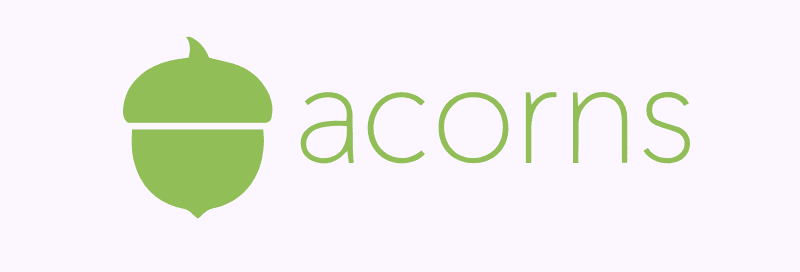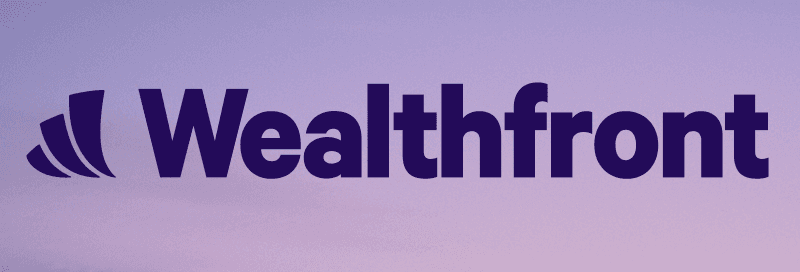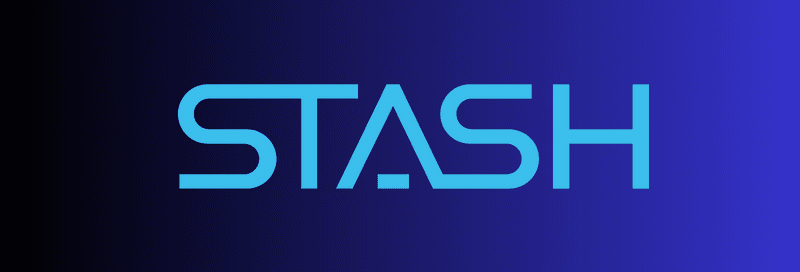There is a wide range of wealth management software and apps that you can use to make informed decisions and strategize your financial planning. With the correct information and market analysis, wealth management software can provide systematic financial management and automated and convenient investment with both long-term and short-term goals. As there are a lot of options in the market to choose from as per your needs, goals, features, and values, it can become difficult to select the perfect wealth management app.
So, this guide will discuss the top 5 wealth management software and applications to work as your perfect investment partner.
What is Wealth Management Software?
Wealth management software is a technology that provides financial solutions or assistance to individuals or businesses. With these applications, you can automate portfolio management, streamline financial planning, analyze investment plans, and build client relationships and reporting systems. The market size of the wealth management market is currently standing at 5.31 billion in 2024 and is expected to almost double by 2029 at a CAGR of 14.04%.
Wealth management systems are used by wealth managers, investors, financial institutions or businesses to track, monitor, and optimize their financial portfolios efficiently. These applications allow users to track real-time data and investment performance, assess risks, and track progress to make informed financial decisions.
Importance of Wealth Management Software
There are various benefits of using wealth management systems, which are described below.
Reduce Financial Anxiety
With simple and effective wealth management strategies these software can recognize and report financial risks much sooner and individuals can make timely financial decisions. Financial systems assist investors during erratic market conditions and keep them informed.
Offers specialized services
There is no one-size-fits-all strategy when it comes to wealth management and the USP these financial systems specialize in. The user interface of these applications is built with the individual goals of investors and provides numerous financial solutions to meet all investment goals of the customers.
Diversified Investment Plans
The first step to consider while investing is to diversify your portfolio and this software offers a large variety of wealth management options. Customers are free to build their portfolios by choosing from ETFs, Stock trading, retirement plans, insurance, and much more.
Key Components of Wealth Management Software
Components of wealth management software deliver scalable and comprehensive solutions for wealth management plans.
Data Security and Management:
To maintain the confidentiality of client information, this software leverages high security and encrypted data storage, such as investment portfolios, transaction histories, customer details, etc. Strong data management strategies and backup mechanisms are integrated to avoid data loss and allow financial transactions.
Asset Allocation:
Wealth management systems allocate customer investment into a diverse portfolio such as bonds, stocks, and cash as per their risk tolerance, future goals, and time duration. This component balances risk by diversifying investment across various assets and improving its overall performance.
Rebalancing:
This typically means re-allocating investments as asset values fluctuate over time which can lead to deviations from the original goals of the investor.
Risk Assessment:
Wealth management applications use sophisticated technology to evaluate portfolio risk by considering factors such as market trends, asset volatility, and correlation. It provides a mechanism to read these risk metrics, such as standard deviation, value risk, and beta to realize potential downside trends in investments.
Performance Reports:
These applications generate comprehensive investment reports that display historical performance, risk assessment, returns, and much more. Customized reports use visualizations representing data in a clear and easy-to-understand interface. Using these reports, investors can assess the performance of their investment plans, track their progress, and if needed make portfolio adjustments to realize their wealth management goals.
Suggested Read
Catalyzing SME Growth Through Banking as a Service (BaaS) Innovation
View Blog
Wealth Management Platform Architecture
These platforms include components such as backend, frontend, and integration components which are explained below.
Frontend Components
- The User Interface (UI) uses visual elements that include interactive components such as a dashboard, screen, charts, forms, investment panels, etc., which allow users to interact with this software.
- The User Experience (UX) focuses on intuitive and user-friendly design that facilitates smooth navigation, efficient workflows, faster reloads, easy accessibility, and pleasant experience.
- The client portal allows customers to access their funds using their investment portfolio, goal tracker, performance reports, risk assessment, and other client information.
Backend Components
- The application server manages core business, such as handling user authorization and client session management. These servers process user requests and retrieve data by interacting with backend servers.
- To maintain accuracy, consistency, and processing of customer data, this software uses business logic to perform calculations and perform complex activities such as risk assessment, investment analysis, portfolio management, and financial planning.
- The database management systems store customer data in a secure and structured manner to ensure integrity and scalability. This data includes customer’s personal information, transaction history, investment data, and other useful information.
Integration Components
- Wealth management software often interacts with external services such as trading platforms, data providers, market sources, and compliance systems. The integration layer allows seamless exchange of data and communication between external and internal systems.
- APIs or Application Programming Interfaces enable communication and exchange of data to enable integration with third-party software, applications, and mobile apps.
- The architecture of wealth management software can be different depending upon its technology, cloud infrastructure, database, and APIs to deliver comprehensive solutions for wealth management goals.
Major Challenges of Building Wealth Management Software
Data Privacy & Compliance
Protecting user data from unauthorized access cyber threats and system breaches is of utmost importance. Furthermore, these systems need to comply with all regulatory frameworks specified by financial institutions which can add complexity during the development phase. Implementing data encryption, security protocols, auditing, and following data protection measures is always a challenge for any wealth management system
Cybersecurity threats
Wealth management software regularly handles financial transactions and stores financial information, which is a huge target for cybercriminals. These threats can lead to phishing attacks, ransomware, data breaches, etc. Therefore, building robust and secure systems is crucial to protect data from these cyber threats. This challenge poses a great responsibility to build strong encryption protocols, intrusion detection systems, security audits, and multi-factor authentication with the latest security protocols.
Regulatory Environment
Understanding the regulatory environment is ever-changing and requires the fulfillment of KYC rules, anti-money laundering schemes, and investor protection guidelines. Ensuring all these regulations during the development phase can be a daunting task that requires thorough knowledge of regulatory and legal framework
Integration Challenge
Wealth management systems deal with various data sets such as portfolio information, market trends, transaction history, etc. and seamlessly communicating among these data sources can be a complex process. This requires robust APIs in place and utilization of integration solutions to easily facilitate data interoperability.
Data Inconsistency
To maintain reliable decision making consistency of data management becomes essential for Financial software. Data inconsistency can be caused by several factors such as system limitations, manual intervention, and integration factors which pose a challenge for data validation, quick verification, and stewardship.
Important factors while building wealth management systems
Wealth management focuses on maximizing the acquisition of assets and building a diverse portfolio. Therefore, you need multi-faceted software that you can use throughout your investment journey.
Easy To Use Interface:
The wealth management app should have an intuitive interface with smooth and easy navigation options. Tracking funds and reading charts can be stressful in itself so to relieve this burden an app should have user-friendly designs, easy-to-read and monitor funds, simple trade execution features, etc. A complex or slow application can compel a visitor to leave the platform and go somewhere else.
Portfolio Management Systems:
Wealth management isn’t just about massive returns, it also needs financial planning schemes like retirement plans, insurance, college savings, and income tax benefits. Personalized recommendation apps that help customers take care of their short-term and long-term financial plans are the major factor that wealth management software must consider.
Inclusion of AI:
Wealth management has seen a massive adoption of AI tools and becoming more evident. A recent study by financialplanning.com found that 68% of wealth management companies are using AI tools to improve their decision-making process. Furthermore, AI has seen massive adoption to be used as a chatbot, investment testing model, and automated financial planning.
Security of Funds and Data:
Every wealth management app deals with the storage of sensitive financial information of its customers, such as credit card information, tax details, and much more, so security becomes a major concern. To prevent any data leaks, or fraudulent activities wealth management companies must use end-to-end encryption, a strong firewall, and access control. A customer only invests their funds with the company that they can trust and building a powerful security system for your wealth management software is the best thing you can give to your customers.
Low Transaction Fees:
Every financial model must be evaluated based on its fee structure, account minimums, trading commission, expense ratio, etc. They can plan their investment only when the fees are convenient to the customer.
By focusing on these effective features and elements, a wealth management system can be optimized to enhance the customer experience and achieve greater confidence in using these applications.
Best Examples of Wealth Management Systems
Here are a few examples of one of the best Wealth Management Software that are available in the market. These wealth management systems have mastered the art of building user-friendly interfaces, utilizing AI for better results, and most importantly targeting wealth management from different perspectives.
Acorns

Acorns focuses on micro-investing which means it is best for users who are looking to invest in small amounts. The app cleverly rounds up their daily purchases to the nearest dollar and invests the remaining change. This means if you buy a coffee for $4.50, the app will round up to $4 and invest the remaining $0.50. When you think about it it's a smart and convenient way to invest a small amount.
You can use the app to set up automatic recurring investments daily, weekly, or every month. This will help you plan your long-term investments with no large burden on your bank account. The app has a great user-friendly design and is available for both iOS and Android users.
Wealthfront

Wealthfront is a smart AI advisor that uses algorithms to manage user investment plans. After creating your account with Wealthfront you will get a series of questions regarding your risk tolerance, timeline, and financial plans, and accordingly, an AI advisor will build a diversified investment plan as per your answers. It is also great for users looking to invest in low-cost ETFs and automated rebalancing.
Wealthfront focuses on a passive strategy to build an investment portfolio and maximize returns for the dedicated risk level. There is no minimum requirement for investing your money, making it accessible to all types of investors. If the user portfolio drifts from its original idea or goal, it automatically rebalances the user portfolio to maintain the given risk appetite and investment returns.
Stash

Stash is an intuitive wealth management platform that focuses on building custom portfolios, investing in small amounts, and educating users. It's the most suitable investment system if you want to align your wealth with personal values and learn more about finance and the stock market.
Stash enables users to invest in ETFs and stocks. Another great advantage of using Stash is that you can buy a fraction of shares instead of purchasing the whole share. This allows you to invest in high-priced stock with a small amount. You can use Stash to set up recurring investment plans to build your portfolio over the long term. If you are looking to gain financial knowledge and build your wealth consistently, then Stash can be the perfect choice for your investment journey.
Final Thoughts
The best wealth management software provides users with automated investment options and digital access, increases their financial knowledge, and helps them grow their assets more effectively. These wealth management systems are the perfect example of how technology and innovative financial goals can be utilized as per individual requirements. These innovative ideas simplify wealth management problems and empower smart investors with effective options to build stronger portfolios.
This is where Solutelabs truly shines, standing at the forefront of innovation within the fintech industry. With a rich history of developing cutting-edge wealth management software, Solutelabs has not only demonstrated its expertise but has also committed to transforming the financial landscape.






